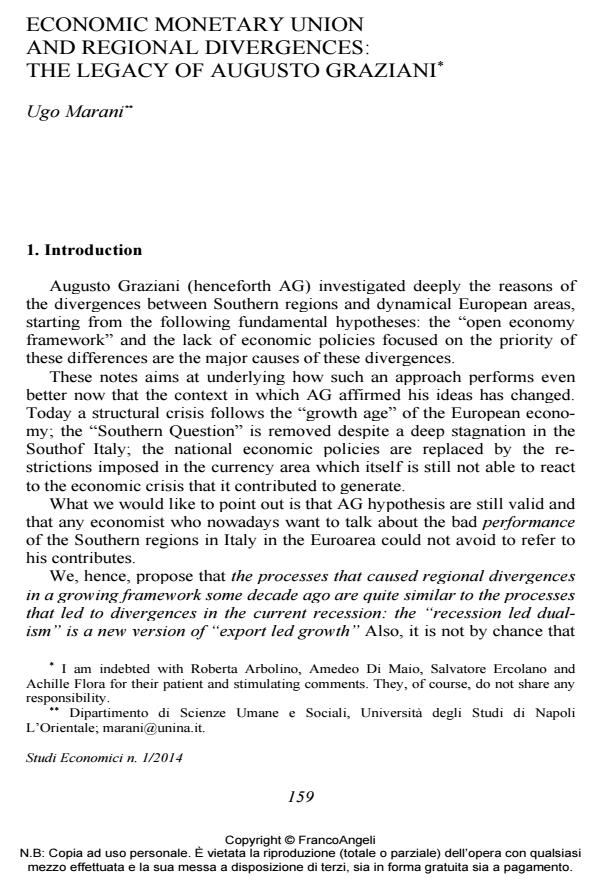Economic monetary union and regional divergences: the legacy of Augusto Graziani
Journal title STUDI ECONOMICI
Author/s Ugo Marani
Publishing Year 2015 Issue 2014/112
Language English Pages 13 P. 159-171 File size 55 KB
DOI 10.3280/STE2014-112012
DOI is like a bar code for intellectual property: to have more infomation
click here
Below, you can see the article first page
If you want to buy this article in PDF format, you can do it, following the instructions to buy download credits

FrancoAngeli is member of Publishers International Linking Association, Inc (PILA), a not-for-profit association which run the CrossRef service enabling links to and from online scholarly content.
The paper outlines the relevance of Graziani’s thinking concerning the effects on Italy’s Southern regions of the creation of European Monetary Union. His interpretation displayed, since the Sixties, the difficulties of growth in those areas and their dependence by the "open economy" setting that favoured more dynamical Northern Areas. Moreover the lack of national policies, aimed at removing those disequilibria, deepened the territorial divergences. Such an approach is, in our view, still convincing and reinforces, indeed, its validity even in the presence of a radical change of the context in which those reflections matured. We suggest the mechanisms underlying the "export-led-growth regional dualism" of some decade is quite similar to "crisis led dualism" of today European Monetary Union. It is not by chance, hence, that recent innovative models working on resilience and hysteresis in lagging regions begin to reassess the Graziani’s interpretation.
Keywords: Open Economy, European Monetary Union, Regional Distribution of Activities, Regional Divergence.
Jel codes: F15, F43, F45, R12
Ugo Marani, Economic monetary union and regional divergences: the legacy of Augusto Graziani in "STUDI ECONOMICI " 112/2014, pp 159-171, DOI: 10.3280/STE2014-112012